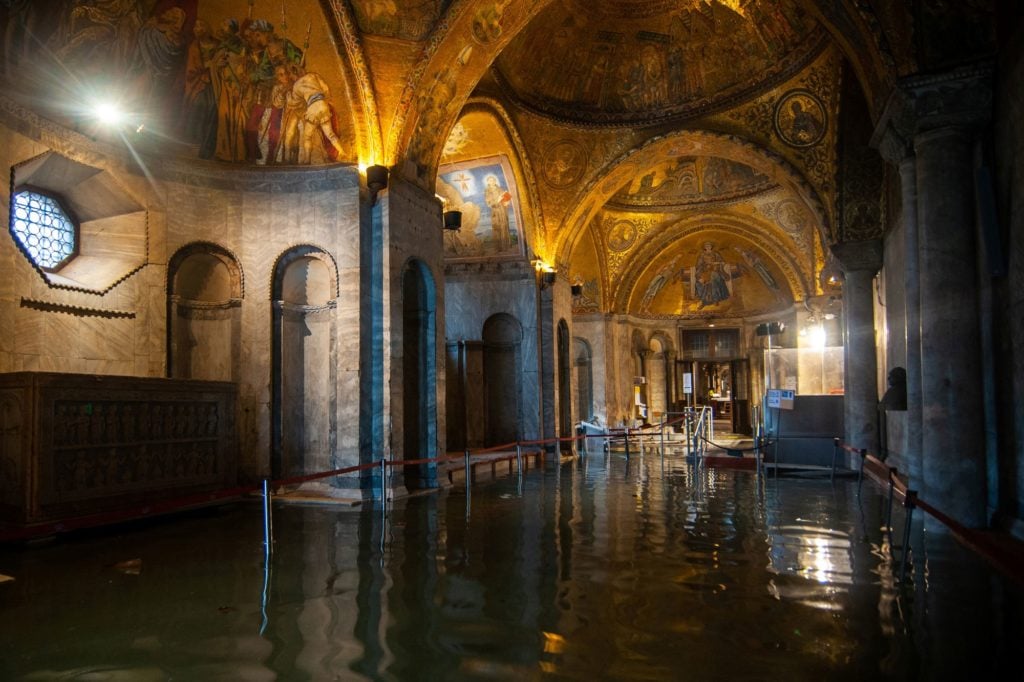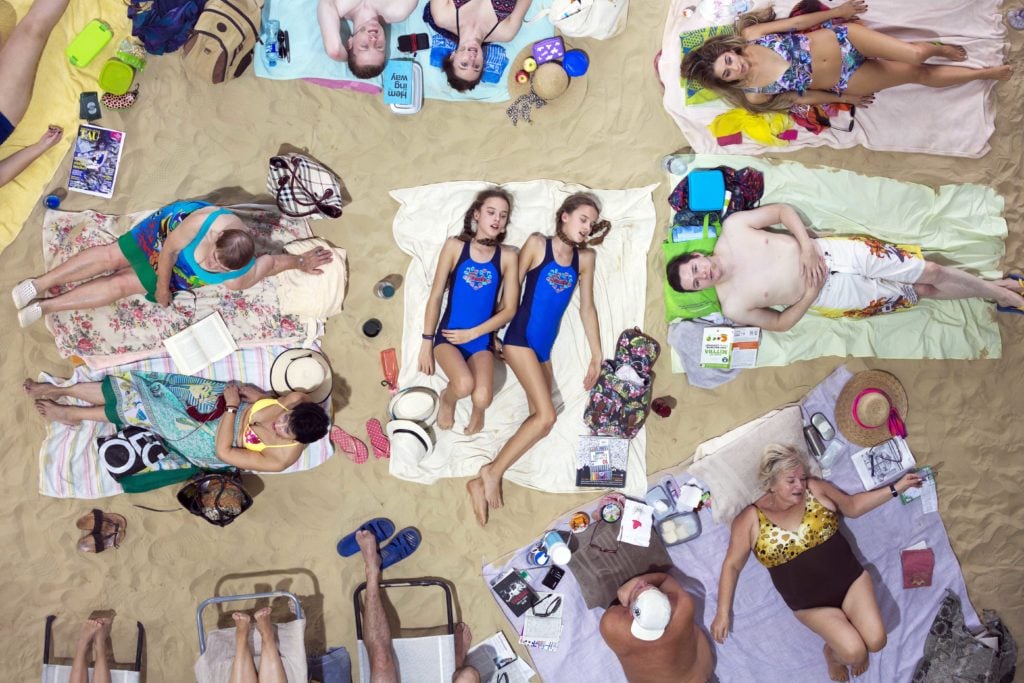Art World
The Venice Biennale Shuts Down as the City Is Hit by Its Worst Floods in Half a Century
The mayor of Venice blames climate change as a surging tide and severe rainstorms create a dangerous combination.

The mayor of Venice blames climate change as a surging tide and severe rainstorms create a dangerous combination.

Javier Pes

Venetians awoke on Wednesday to find most of their city underwater. The mayor of Venice blamed climate change for the severe flooding, which has resulted in the highest water levels in city in more than 50 years. Two people have been reported dead since the floods began.
The Venice Biennale has also been forced to close while the city struggles to weather the dangerous combination of rainstorms and an exceptionally high tide.
The historic Basilica of Saint Mark’s has also been flooded for the fourth time in the past two decades, threatening its medieval mosaic floors. “It’s causing irreparable damage, especially when it dries out in the lower section of the mosaics and tiling,” Archbishop Francesco Moraglia told Reuters.

The flooded Basilica of St. Mark, November 13, 2019. Photo by Simone Padovani Awakening/Getty Images.
Venice’s mayor Luigi Brugnaro has declared the situation a disaster. “The city is on its knees,” he told RAI, Italy’s national broadcaster. The mayor was speaking after the seasonal high tide, or Acqua Alta, peaked at just over six feet last night, the second highest level since a disastrous flood in 1966. Photographs of the water-logged city include one shot of a Venetian water bus—ironically, one that bore advertising for the Biennale—stranded on the waterfront near Saint Mark’s Square.
Although the water level has dropped since its peak, it is due to rise again with the next tide. High winds have trapped water in the lagoon and more bad weather is predicted.
A spokeswoman for the Venice Biennale confirmed the closure today of the main exhibition in Giardini and Arsenale along with national pavilions in both venues. “We hope that all the activities will open tomorrow,” she said.
Along with dramatic images and footage posted on social media of the flooding, several of Venice’s leading cultural institutions are posting warning messages today. The Peggy Guggenheim Collection is closed, as are the Pinault Collection’s two venues, the Palazzo Grassi and Punta della Dogana.

Sun & Sea, Lithuania’s contribution to the 2019 Venice Biennale. Photo: Neon Realism.
One exhibition that is not directly affected is the Lithuanian pavilion, “Sun & Sea (Marina),” which won the biennale’s Golden Lion award and features an operatic performance about climate change set in an indoor beach. It already closed to the public at the end of October. The poetic work of art—which offered a new approach to making art about climate change and destruction—was created by Rugilė Barzdžiukaitė, Vaiva Grainytė, and Lina Lapelytė, and the pavilion was curated by Lucia Pietroiusti.
Pietroiusti says: “We see the effects of climate change far away from where we are, and we turn away. The same effects get closer, and we call them ‘events’, expecting everything to return to normal some time soon. This is just another way of turning away: away from the unfathomable at our doorstep.” The curator of ecology at London’s Serpentine Galleries says that the “disaster” of climate change is a global problem of “economy, colonialism, politics, infrastructure, and also of imagination.”
The scale of this week’s flooding, which is estimated have caused millions of euros in damage, will increase calls for better protection of the city and its historic buildings. A long-delayed barrier system remains incomplete and the project has been dogged by corruption scandals.